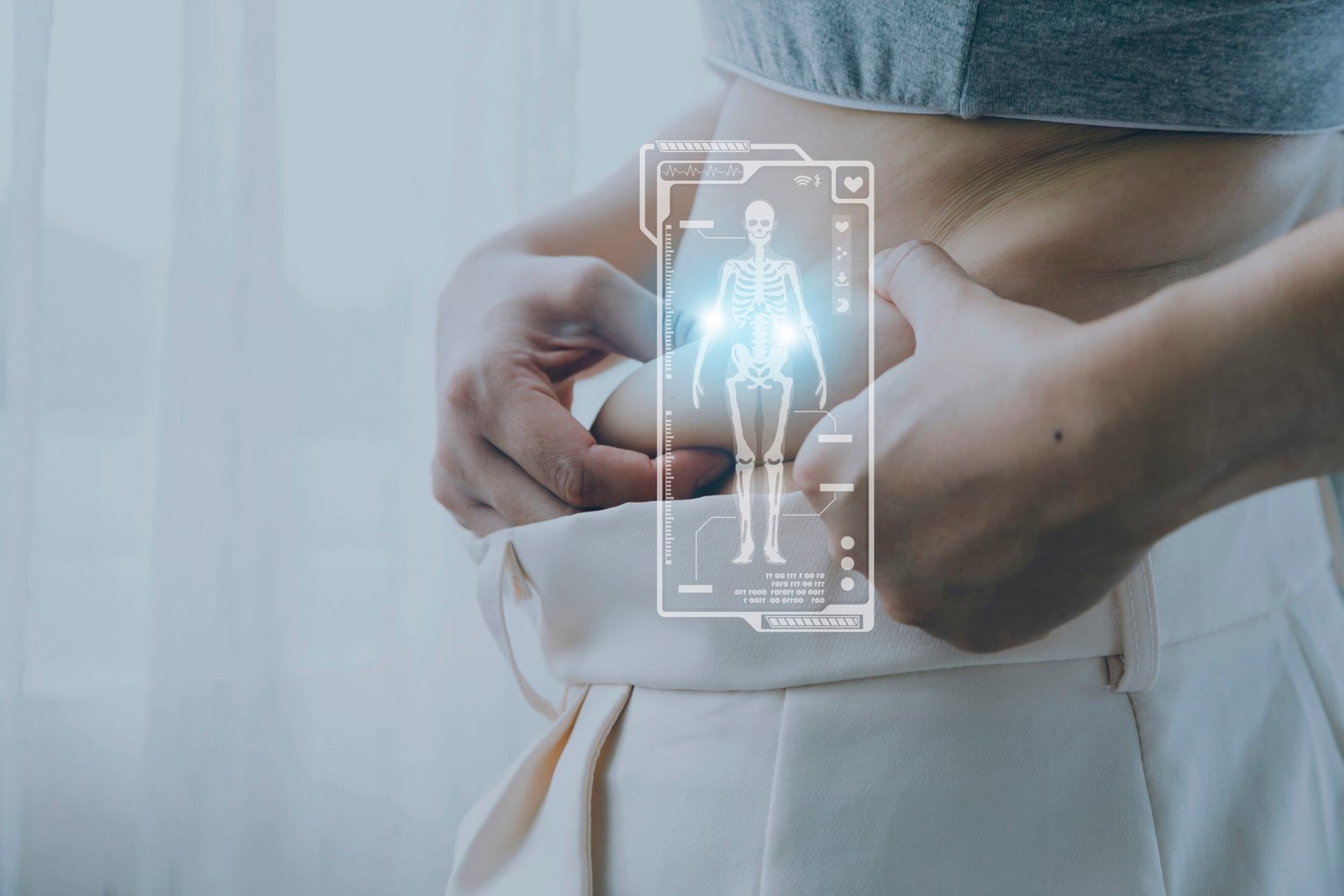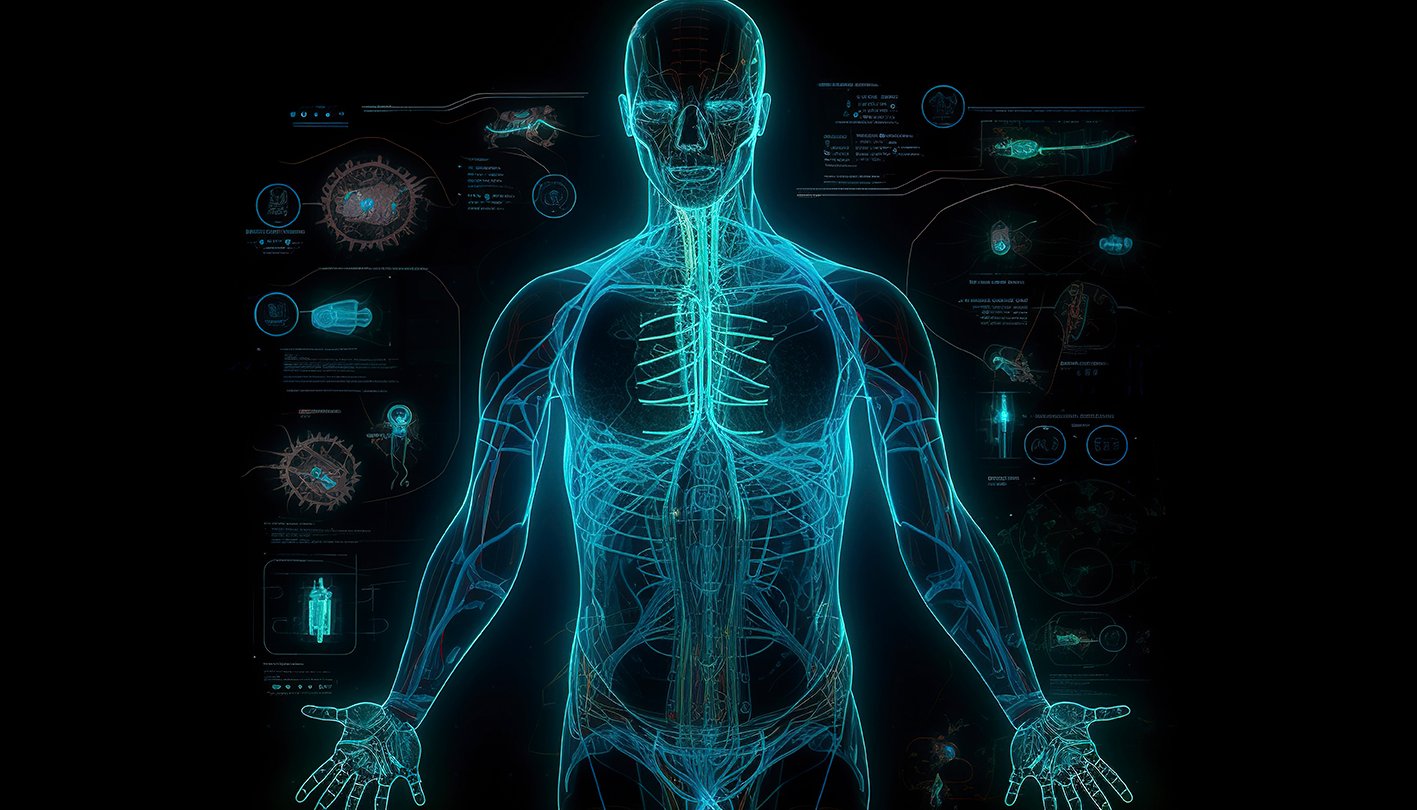How can you include it in your lifestyle?
What Is Biohacking And How Does It Work?
Biohacking is a broad term that encompasses a wide range of activities involving the direct manipulation of biological systems, typically with the aim of enhancing, changing, or optimizing human performance, health, and wellbeing. This practice spans several categories, each with its own methods and goals. Here are some key areas within biohacking:
- Nutrigenomics: Focuses on understanding how different foods affect our health and performance at the genetic level. Biohackers in this field might experiment with diets or specific foods to optimize their health and physical performance based on their genetic makeup.
- DIY Biology: Also known as biohacking in a more traditional sense, this involves individuals or community labs conducting biological experiments outside of professional settings. This can range from genetic engineering to microbiology experiments, often with the goal of learning or developing new biological solutions.
- Grinder: This subculture within biohacking involves people implanting devices, electronics, or even magnets into their bodies to extend or enhance human capabilities. It’s a more extreme form of biohacking that looks towards merging human biology with technology.
- Quantified Self: This aspect involves tracking various biological, physical, and behavioral data points to optimize one’s lifestyle. It includes the use of wearable technology to monitor fitness, sleep, nutrition, and other aspects of daily life, aiming to improve health and performance through data analysis.
- Nootropics: This involves the use of supplements, drugs, or other substances to enhance cognitive function, memory, creativity, or motivation in healthy individuals. It’s a form of biohacking focused on improving mental performance and wellbeing.
- Mindfulness and Meditation: While not often associated with biohacking in a technological sense, these practices are considered forms of biohacking focused on optimizing mental and emotional health through various techniques of mind training.
- Cryotherapy, Heat Stress, and Light Therapy: These methods manipulate the body’s response to different environmental conditions, such as extreme cold, heat, or specific light wavelengths, to promote health and recovery, improve performance, or stimulate specific biological processes.
Biohacking is a controversial field, with enthusiasts advocating for its potential to democratize science and significantly enhance human abilities, while critics caution against potential health risks, ethical dilemmas, and lack of regulation. As it encompasses a vast and varied set of practices, the risks, benefits, and ethical considerations can vary widely depending on the specific type of biohacking involved.
Type of Biohacking

Biohacking can be divided into several types, each focusing on different aspects of human biology and performance enhancement. Here’s a closer look at the main types of biohacking:
- Nutritional Biohacking: This type involves adjusting one’s diet and supplement intake to improve health, energy levels, cognitive function, and physical performance. It can include practices like intermittent fasting, ketogenic diets, or the use of specific supplements that target individual nutritional needs or goals.
- Physical Biohacking: This encompasses practices aimed at enhancing physical performance and recovery. Techniques can include high intensity interval training (HIIT), strength training, endurance training, and the use of technology like EMS (Electrical Muscle Stimulation). It also involves optimizing sleep and recovery through methods such as polyphasic sleep patterns or using cooling devices to enhance deep sleep stages.
- Cognitive Biohacking: This area focuses on improving mental performance, memory, focus, and overall brain health. It can involve the use of nootropics (smart drugs or supplements that enhance cognitive function), meditation and mindfulness practices, neuro-feedback, and brain training exercises.
- Genetic Biohacking: With advancements in genetic testing and CRISPR technology, some biohackers explore ways to understand and manipulate their genetic code to prevent diseases, enhance certain traits, or extend lifespan. This type of biohacking is more complex and controversial, often involving professional scientists and researchers.
- DIY Biology: Often referred to as “garage biology” or “DIYbio,” this type involves individuals conducting biological experiments outside of traditional research institutions. It can range from amateur genetic engineering to environmental biology projects, with practitioners often sharing their findings and methods openly to contribute to scientific knowledge.
- Grinder Biohacking: Grinders are a subculture within biohacking that experiments with bodily enhancement through implants or modifications. This can include magnetic implants to sense electromagnetic fields, RFID chips for electronic interaction, or experimental procedures to enhance physical senses or capabilities.
- TechnologyAugmented Biohacking: This type involves using technology to monitor, analyze, and modify biological systems. It encompasses wearable devices that track physical and biological metrics (like heart rate, sleep quality, or glucose levels), as well as more advanced technologies like transcranial direct current stimulation (tDCS) devices for brain modulation.
- Mindfulness and Emotional Biohacking: This focuses on techniques to improve emotional wellbeing, stress resilience, and mental health. Practices can include various forms of meditation, breath work, yoga, and the use of biofeedback devices to enhance mindfulness and emotional regulation.
Each type of biohacking comes with its own set of methods, goals, and potential risks. While some practices can be safely explored with minimal equipment or changes to lifestyle, others (especially those involving genetic modification or implantation of devices) should be approached with caution and, ideally, professional guidance.
Benefits of Biohacking
 Biohacking encompasses a wide range of practices aimed at optimizing health, performance, and wellbeing, and as such, it offers a variety of potential benefits. These benefits can be physical, cognitive, emotional, and sometimes extend to improvements in longevity and disease prevention. Below are some of the key benefits associated with different forms of biohacking:
Biohacking encompasses a wide range of practices aimed at optimizing health, performance, and wellbeing, and as such, it offers a variety of potential benefits. These benefits can be physical, cognitive, emotional, and sometimes extend to improvements in longevity and disease prevention. Below are some of the key benefits associated with different forms of biohacking:
- Improved Physical Health and Performance
Enhanced physical performance, including increased strength, endurance, and faster recovery from exercise.
Improved metabolic health through dietary interventions, leading to better control of blood sugar levels, and potentially reducing the risk of metabolic diseases.
Optimization of body composition, through targeted exercise and nutritional strategies, leading to increased muscle mass and reduced body fat.
- Enhanced Cognitive Function
Improved cognitive functions such as memory, focus, and creativity through the use of nootropics, adequate sleep, and cognitive exercises.
Increased productivity and efficiency in tasks requiring mental exertion, due to optimized brain health and function.
- Better Sleep Quality
Enhanced sleep quality and efficiency through sleep tracking and interventions like reducing blue light exposure before bedtime, optimizing bedroom environment, and following a consistent sleep schedule.
Increased energy levels and improved overall wellbeing from more restorative sleep.
- Increased Longevity and Health-span
Potential extension of lifespan and health-span through dietary interventions like calorie restriction or intermittent fasting, as well as through regular physical activity and stress reduction techniques.
Reduced risk of chronic diseases such as heart disease, diabetes, and certain cancers through lifestyle modifications and regular health monitoring.
- Enhanced Mood and Emotional Wellbeing
Improved mood and reduced stress through mindfulness practices, meditation, and biofeedback techniques.
Increased resilience to stress and anxiety, leading to a more balanced emotional state and improved quality of life.
- Personalized Health Insights
Deeper understanding of one’s own body and health status through genetic testing, blood testing, and the use of wearable technology to track various biomarkers.
Ability to make more informed decisions about diet, exercise, supplements, and lifestyle changes based on personal health data.
- Community and Empowerment
Access to a community of likeminded individuals who share interests in selfimprovement, health optimization, and technological advancements.
Empowerment through taking control of one’s own health and wellbeing, leading to a more proactive approach to health maintenance and disease prevention.
It’s important to note that while biohacking can offer these potential benefits, it also comes with risks, especially for more invasive techniques or those that involve significant changes to diet, lifestyle, or the body itself. It’s advisable to approach biohacking practices with caution, conduct thorough research, and, when necessary, consult healthcare professionals to ensure safety and efficacy.
How to start Biohacking

Starting your biohacking journey involves a blend of curiosity, experimentation, and a commitment to improving your health, wellbeing, or performance. It’s about understanding your body and mind, then applying strategies to optimize their function. Here’s a roadmap to help you get started with biohacking, focusing on accessible and safer practices:
- Set Clear Goals
Identify what you want to achieve with biohacking. Are you looking to improve your physical performance, enhance cognitive function, boost energy levels, or improve overall health and longevity?
Setting clear, measurable goals helps you choose which biohacking methods to pursue and allows you to track your progress effectively.
- Begin with the Basics
Diet and Nutrition: Experiment with dietary changes that could enhance your health, such as reducing sugar intake, increasing vegetable and fruit consumption, or trying intermittent fasting.
Sleep Optimization: Prioritize sleep quality. Experiment with improving your sleep hygiene—limiting screen time before bed, ensuring your room is dark and at a comfortable temperature, and establishing a regular sleep schedule.
Physical Activity: Incorporate regular exercise that you enjoy and that fits your fitness level. This could range from walking or yoga to more intense activities like weightlifting or high intensity interval training (HIIT).
- Track Your Progress
Use journals, apps, or wearables to track your diet, exercise, sleep, and how you feel. This data is invaluable for understanding what works for you and what doesn’t.
- Experiment and Iterate
After establishing baseline habits, start experimenting with one variable at a time. This could involve trying different dietary supplements, meditation, cold exposure, or experimenting with nootropics for cognitive enhancement.
Evaluate the effects of each change based on your tracking data and personal observations. Be patient, as some interventions may take longer to show effects.
- Educate Yourself
Continuously seek out new information and resources on biohacking. Books, podcasts, online forums, and scientific journals are great sources of information.
Stay critical and discerning about the information you consume, focusing on evidence based practices and considering the credibility of your sources.
- Prioritize Safety and Consult Professionals
For more advanced or invasive biohacking methods, such as genetic testing, supplementation beyond basic vitamins, or experimenting with fasting, it’s crucial to consult with healthcare professionals.
Be cautious of any intervention that could have significant health risks. Always prioritize safety and do not substitute professional medical advice with unverified biohacking experiments.
- Join a Community
Connecting with a community of biohackers can provide support, inspiration, and valuable insights. Online forums, social media groups, and local meetups are great places to start.
- Adopt a Mindset of Continuous Improvement
Biohacking is a journey, not a destination. It involves continual learning and adaptation. Stay open to new experiences, be ready to adjust your approaches, and celebrate the small wins along the way.
Starting with biohacking is about making small, incremental changes to your lifestyle and observing their impact on your overall wellbeing. It emphasizes personal responsibility and proactive engagement with your health, encouraging a mindset of experimentation and selfdiscovery.
Common methods of Biohacking

Biohacking encompasses a wide range of practices aimed at optimizing human performance, health, and wellbeing. The methods can be simple and accessible to anyone, or they can be more advanced, requiring specialized knowledge or equipment. Here are some common methods of biohacking:
- Nutritional Changes
Intermittent Fasting: Cycling between periods of eating and fasting to improve metabolic health, increase longevity, and support weight loss.
Ketogenic Diet: A high fat, low carbohydrate diet that aims to put the body into a state of ketosis, where it burns fat for fuel instead of carbohydrates, potentially supporting weight loss and cognitive function.
Supplementation: Using vitamins, minerals, and other supplements to support overall health, fill nutritional gaps, or enhance cognitive performance.
- Physical Activity Adjustments
High Intensity Interval Training (HIIT): Short bursts of intense exercise followed by rest periods, to improve cardiovascular health and fitness.
Strength Training: Building muscle and strength through resistance training, which can improve metabolism, bone density, and physical performance.
Yoga and Mind Body Practices: Enhancing physical flexibility, mental clarity, and stress resilience.
- Sleep Optimization
Sleep Hygiene: Establishing a bedtime routine and environment conducive to quality sleep, such as reducing blue light exposure before bed, maintaining a cool and dark bedroom, and sticking to a consistent sleep schedule.
Sleep Tracking: Using wearable devices or apps to monitor sleep patterns and identify areas for improvement.
- Cognitive Enhancement
Nootropics: Utilizing substances that could improve cognitive function, such as caffeine, Ltheanine, or more specialized supplements.
Meditation and Mindfulness: Practices aimed at improving mental clarity, emotional regulation, and stress management.
Brain Training Games: Using specially designed games and puzzles to enhance cognitive abilities like memory, attention, and problem solving.
- Technological Enhancements
Wearable Technology: Using devices like fitness trackers, smart watches, and sleep trackers to monitor and analyze personal health data.
Biofeedback and Neuro-feedback: Using technology to gain awareness and control over physiological functions, such as heart rate variability or brainwave patterns, to improve health and performance.
- DIY Biology
Genetic Testing: Analyzing genetic data to gain insights into health predispositions and potential ways to mitigate risks.
Micro-biome Testing: Assessing the health and composition of the gut micro-biota for insights into digestive health, immunity, and more.
- Environmental Modifications
Cold and Heat Exposure: Using practices like cold showers, ice baths, or sauna sessions to enhance resilience, recovery, and circulation.
Light Therapy: Utilizing different wavelengths of light to influence bodily functions, such as blue light in the morning to stimulate alertness or red light therapy for skin health and circadian rhythm regulation.
- Grinders and Body Modification
Implants and Sensors: Inserting devices or sensors into the body to enhance senses or monitor health metrics in real-time. This area is more controversial and carries higher risks.
Each biohacking method comes with its own set of considerations, potential benefits, and risks. It’s important to approach biohacking with caution, do thorough research, and, when necessary, consult healthcare professionals to ensure that any new practice is safe and appropriate for your individual health needs and goals.
Things to keep in mind

When diving into the world of biohacking, it’s important to approach it with both enthusiasm and caution. Here are some key things to keep in mind to ensure your biohacking journey is both effective and safe:
- Safety First
The most fundamental rule is to do no harm. Research any biohacking method thoroughly before trying it out, especially if it involves supplements, extreme diets, fasting, or any form of self experimentation that could impact your health.
- Consult Healthcare Professionals
Before making significant changes to your lifestyle, diet, or starting new supplements, it’s wise to consult with healthcare professionals, particularly if you have existing health conditions or are taking medication.
- Start Slow
Begin with less invasive methods of biohacking, such as adjusting your diet, improving sleep hygiene, or incorporating regular physical activity. Monitor how these changes affect your body and wellbeing before moving on to more advanced biohacking techniques.
- Individual Differences
Recognize that biohacking is highly individual. What works for one person may not work for another due to differences in genetics, lifestyle, and health status. Listen to your body and adjust your biohacking practices accordingly.
- Use Reliable Sources
Ensure your information comes from credible sources. Rely on scientific research and evidencebased practices as much as possible. Be skeptical of anecdotal evidence and testimonials that lack scientific backing.
- Track and Measure
Keeping detailed records of your biohacking experiments (including baseline measurements, interventions, and outcomes) is crucial for understanding what is effective. Use journals, apps, or wearable devices to help track your progress.
- Balance and Moderation
While it’s tempting to dive deep into biohacking techniques, it’s essential to maintain balance and not let these practices consume your life. Biohacking should enhance your life, not become an obsession that detracts from your overall wellbeing.
- Ethical and Legal Considerations
Be mindful of the ethical and legal implications of certain biohacking practices, especially those involving genetic editing or DIY biology experiments. Respect privacy, consent, and environmental considerations in all your biohacking activities.
- Be Patient and Persistent
Biohacking results can take time, and not every experiment will lead to immediate or noticeable improvements. Persistence and patience are key. Be prepared to adjust your approach based on what you learn from each experiment.
- Community Engagement
Engaging with the biohacking community can provide support, insights, and shared experiences. However, always critically assess any advice or recommendations and consider how they apply to your unique situation.
By keeping these considerations in mind, you can navigate the world of biohacking more safely and effectively, using it as a tool for personal growth and health optimization.


Feel free to let me know if you need further assistance or if there’s anything else you’d like to add or modify!
“Hello there! I recently noticed that you’ve taken the time to visit my website, and I wanted to express my heartfelt gratitude for your interest. Your support means a lot to me. In return, I would like to extend my support by visiting your website as well.
“Hello there!